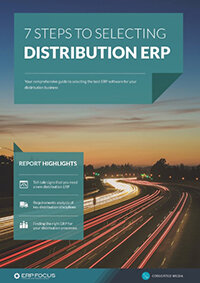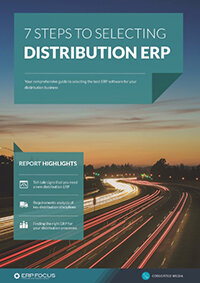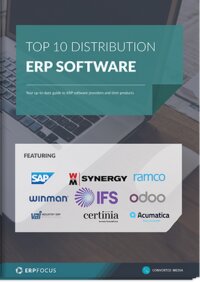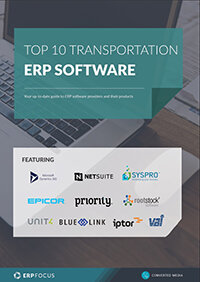What benefits distribution ERP brings to wholesalers
According to 2018 Aberdeen Research analysis, at least 33% of all ERP-driven wholesale distribution systems are five years old or less. This maturity statistic suggests that the applied use of resources-driven systems is growing rather than contracting at an enterprise segment level.
Obviously, there must be some significant advantages involved when ERP is applied within the wholesale industry. However, to make this question more granular, what do these systems do; where do they apply operationally; and how have ERP systems become critical system partners at a business level?
Consequently, we thought we’d take a run at those questions and more, along with offering some practical conclusions that you can apply in your own wholesale distribution operation.
Benefits of distribution ERP for wholesalers
In general terms, there are a number of operational advantages when they came to ERP systemization. These include:
- More effective quote-to-cash metrics
- Expanding enterprise growth while avoiding increased FTE counts
- Reductions in operating costs
- Better administrative cost management
- More effective inventory cost management
- Limiting or entirely eliminating stale-dated inventory
- More effective overall enterprise resources control
- Streamlining the time-to-decision loop
- Product waste reduction
- Enhanced customer value
Now that we have set the scene as it were, let’s dig into some of these operational elements more specifically.
Improved optimization of purchasing
Some of the most useful traits of ERP systems relate to digitally streamlining purchasing processes. To understand this value clearly, you first have to understand the steps relating to purchasing as a linear and fully integrated evolution. These core processes include:
- Acknowledgment of order – in this case, a series of subordinate steps apply including; price and quantity recognition; stipulated delivery date; and any relevant negotiation between buyer and supplier.
- Pre-shipment advice – this sub-set applies to a production acknowledgment announcing that the supplier is ready to deliver and a customer is ready to receive a product. This step is typically congruent with a re-state of agreed-upon delivery dates, thereby establishing a final transaction contract; usually by means of a formal Purchase Order (PO).
- Delivery advice – in the case of ERP specifically, all digital transactions, whether they relate to inbound or outbound activity are usually recorded by the production of a digital transshipment record and subsequently monitored within the supply-chain.
- Invoice indexing – this step follows immediately behind any delivery advice processes. In this event, because a product has not necessarily been paid for during transshipment, this step serves as a second digital footprint, thereby allowing both producer and receiver to monitor the transaction throughout.
- Triple transaction reconciliation – once a product is received, the previous Order Acknowledgement, the formal PO, and the delivery invoice are digitally cross-checked to ensure that all elements relating to the transaction are correct. This final validation represents the final business-gate between delivering/receiving a product and remitting proper payment.
Again, bear in mind that each of these steps are dependent on all others, however, this last step represents the final step necessary to resolve a transaction, and consequently triggers the direct application of either credit or liability elements on each participant’s financial ledgers.
Check out the top distribution ERP features to include in your requirements
Now, in the pre-ERP world, each of these steps applied as a series of manual processes that were both administratively ponderous, and prone to error. On the other hand, however, because today’s resources platforms are fully-integrated any previous difficulties are largely marginalized, errors are easy to identify, and finally make the entire chain much more robust and efficient than before.
More effective logistical management
Using the same logic applied above. Similar digital processes apply in the case of ERP relating to logical management. Without going into unnecessary detail, previously manual processes are in effect streamlined in the same way that purchase optimization is. In this case, a few of the advantages ERP delivers include:
- Inventory categorization – ERP allows management to automate its inventory according to the value and speed of turnover. Manual categorization is difficult to handle at best, where digital manipulation of the same data is less troublesome.
- Forecast automation – many wholesalers are dependent on non-finite elements such as seasonal requirements; spontaneous trend projections; the vagaries of economic events or other issues that create unpredictable production demands. ERP-driven forecast processes handle all of these elements and more.
- Continuous process improvement – by their nature, ERP platforms constantly monitor and analyze operational activities, thereby allowing operators to establish and maintain clear-eyed decision-making.
- Confidence throughout the process chain – whether business processes are specifically oriented to the wholesale distribution sector, or any other revenue production chain, management/operator confidence must be maintained throughout. This is largely derived by clarity created by an ability to identify and resolve issues well before they become problems.
ERP platforms can serve as critical points of contact by managing, measuring, validating and recording disparate information elements ranging from raw data points to complete process indexing, and even store relevant anecdotes that may or may not have a direct impact on a particular transaction in real-time, but may ‘suggest’ awareness of other issues downstream. In all cases, then, once fully-actualized, ERP platforms support these value points and consequently provide information that enterprise operators come to bank on.
Wholesale distribution is one of the bedrocks of today’s commercial economy, and this acknowledgment is becoming more critical as sales globalization evolves toward an uncertain business future. Frankly, there is no easy ways to resolve the business sector’s challenges unless enterprise operators continue to make evolved steps toward consolidating active component indexes, processes and regulatory rule-sets within variously centralized ERP information repositories, thereby creating ready access to all business activities in real-time.
Free white paper

7 steps to selecting distribution ERP
Get expert advice on distribution ERP selection and requirements analysis

Featured white papers
-

Top 10 Distribution Software Comparison
Compare the best distribution ERP systems available today
Download -

Top 10 Transportation ERP Software Comparison
Get your free comparison of the top 10 transportation ERPs
Download -

7 steps to selecting distribution ERP
Get expert advice on distribution ERP selection and requirements analysis
Download
Related articles
-

ERP for Food Distributors: Key Functionality
In a modern world where products are tailored to consumers, why should ERP for food distributors ...
-

Secret KPI: Why Your ERP Implementation Team Matters More Than Software
Learn how Godlan ensures successful ERP implementation for manufacturers with proven strategies &...
-

ERP & Logistics: Optimizing the Supply Chain
Read about the steps you can take to optimize your supply chain through ERP software logistics ma...

